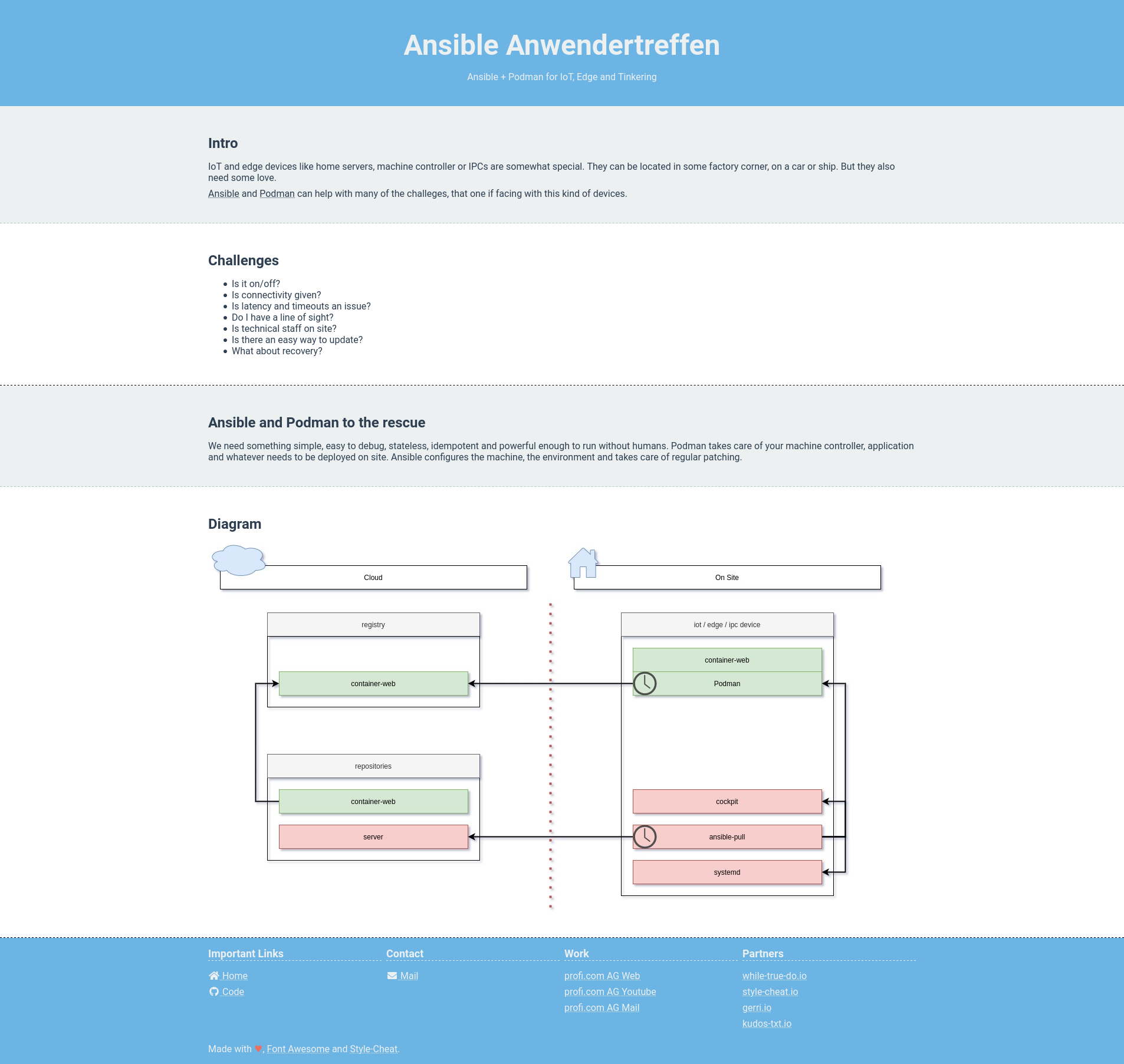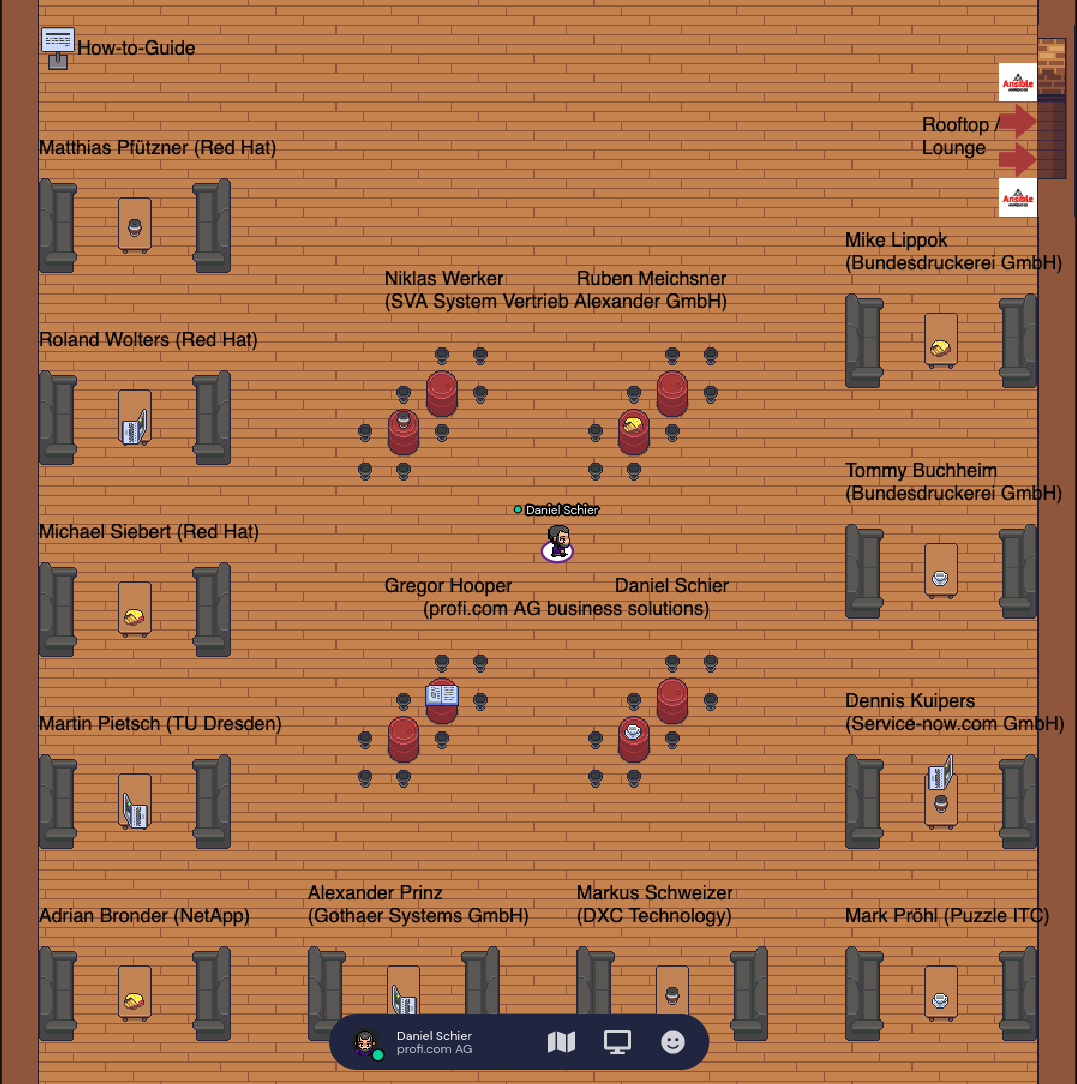Conference - Ansible Anwendertreffen
Today, the second "Ansible Anwendertreffen" was held online. The conference is a gathering of professionals working with Ansible, in German language.

Today, the second "Ansible Anwendertreffen" was held online. The conference is a gathering of professionals working with Ansible, in German language.
The organizers contacted us via the Dresden OpenSource UserGroup and Martin and I were very happy to participate. In addition, a colleague of me was also able to give a talk.
In this article, I want to summarize my experience and the conference schedule.
Agenda
The agenda for the Ansible Anwendertreffen was packed with keynotes and talks.
Matthias Pfützner (Red Hat) started the conference and gave a brief introduction to Ansible Automation and explained what Ansible is and which tools you can expect.
The first keynote was given from Mike Lippok (Bundesdrucker). He talked about VUCA and how automation is helping to mitigate exhaustion and uncertainty. He also gave some insights how the Bundesdruckerei managed to introduce automation.
The second keynote was given from Roland Wolters (Red Hat), also known as @liquidat. He talked about the development and evolution of Ansible and what we can expect in the future. Unfortunately, the internet connectivity was a bit poor and the session was stopped early.
Breakout Session
After the keynotes, we had the option to give a talk or listen to one. Below you can find a listing of the different breakouts, that I am particularly interested in. Unfortunately, I need to wait some days to watch the recordings of each. The complete list can be found here.
A team of Red Hat, DXC Technology and service-now.com GmbH were giving a talk about ServiceNow ITSM and Ansible, which seems promising.
The talk "Ansible meets Terraform - a great match" was given by a colleague (Gregor Hooper) from profi.com AG. This was also the talk, I was attending a bit, but missed the end.
In the second breakout slot, I was giving my talk about "Ansible + Podman for IoT, Edge and Tinkering".

It was a nice session and I demonstrated how ansible-pull and podman auto-update are working together. Both are topics, that will be discussed in a blog article, too. You can find the slides and example code here.
I am really looking forward to getting my hands on the recordings about "Ansible Execution Environments" (Tim Grützmacher) and the report about Ansible Automation Hub "Erste Erfahrungen mit dem Ansible Automation Hub" from Niklas Werker and Ruben Meichsner.
Meet at gather.town
After the breakout sessions, it was time for some "meet and talk" with the attendees and speaker. The organizers prepared a session at gather.town. This service was completely new for me, but quite fun. You will find yourself (your avatar) in an isometric map, and you can interact and talk to each other.

If somebody knows something comparable, but Open Source, I would love to hear from it.
Experience
I love this kind of events. People meet each other (even if it is virtual), share knowledge and want to connect.
Giving a talk is also an option to share some knowledge on my own and get feedback from the community.
If there is one thing, I would change, it is the amount of parallel talks. As a speaker, I was able to attend only one talk (partly). I would love to see more options in future events.
Updates
These updates were included after the initial publish of the article.
Review
Just a day after the conference, the organizers published another article and linked all the code and slides available.
Conclusion
Since I was already involved in some webinars in the past weeks and also was giving a talk later the day at the 5th DDOSUG meetup, I was exhausted, but really really really happy. I learned a lot about Ansible, and I am looking forward to the slides and recordings of talks, I missed.





